TL;DR
- Employee outsourcing involves hiring external professionals through a third-party provider to handle specific roles or functions.
- Key models include onshoring, offshoring, and nearshoring, each with distinct benefits.
- The process includes identifying tasks, budgeting, choosing providers, onboarding, and managing performance.
- While it offers flexibility and speed, businesses must address risks like communication gaps, data security, and provider dependency.
- Successful outsourcing relies on clear goals, the right tools, legal clarity, and ongoing performance evaluation.
- Team Lease simplifies and strengthens this process with proven workforce solutions.
Introduction
In an era where speed, flexibility, and efficiency determine a company’s success, businesses are constantly seeking smarter ways to scale operations without increasing overhead. One strategy that’s gaining significant momentum across industries is employee outsourcing.
But what exactly does employee outsourcing mean? How does it function behind the scenes? And more importantly, is it right for your business?
In this blog, we’ll break down the concept of employee outsourcing in simple terms, explaining how it works, the benefits it offers, the challenges to be aware of, and how to make it a successful part of your business strategy.
Let’s dive in.
What is Employee Outsourcing?
At its core, employee outsourcing is the practice of hiring external professionals or entire teams through a third-party provider to perform tasks or manage functions that would traditionally be handled in-house.
This setup can be applied across a range of business areas, such as:
- IT services
- Human Resources (HR)
- Marketing and content creation
- Customer support
- Finance and accounting
The third-party provider is responsible for hiring, training, and managing these outsourced professionals. This allows your company to benefit from high-quality work without managing full-time staff directly.
Why do Businesses Choose Outsourcing?
Outsourcing has become a strategic move for businesses aiming to stay lean, competitive, and efficient. Here are the top reasons companies choose this model:
- Cost Savings: Reduce expenses on hiring, training, infrastructure, and employee benefits by paying only for needed services.
- Access to Global Talent: Tap into a wider pool of skilled professionals across various domains, without geographic limitations.
- Faster Time to Market: Speed up project delivery and launch timelines with ready-to-work external teams.
- Focus on Core Business: Free up internal resources to concentrate on growth, innovation, and customer experience.
- Scalability & Flexibility: Easily scale your workforce up or down based on project or seasonal needs.
- 24/7 Operations: Leverage different time zones for continuous work and round-the-clock support.
- Risk Reduction & Compliance: Stay aligned with labor laws and data regulations with help from experienced providers.
Organizations leveraging Team Lease‘s outsourcing solutions have seen significant reductions in expenses, enabling them to allocate resources more strategically.
Now let’s dive into the types of employee outsourcing models available to find the best fit for your business.
Types of Employee Outsourcing Models
Selecting the right outsourcing model is crucial for aligning with your company’s goals, budget, and operational capacity. Each model offers unique advantages and trade-offs depending on factors like location, costs, and the level of control required. Here’s a closer look at the three primary employee outsourcing models:
1. Onshoring (Domestic Outsourcing)
Onshoring refers to outsourcing work to a third-party provider within the same country. It’s often chosen by businesses that want better control, fewer communication barriers, and compliance with local laws and regulations.
Key Benefits:
- Easier communication due to shared language, time zones, and cultural context
- Faster response times and smoother collaboration with minimal delays
- Legal and tax familiarity, reducing regulatory risk and simplifying contract management
Considerations:
- Higher labor costs compared to offshore or nearshore options
- Talent availability may still be limited for niche or tech-based roles
Best For:
Companies that require tight collaboration, handle sensitive data, or operate in highly regulated industries such as healthcare or finance.
2. Offshoring
Offshoring involves outsourcing to providers located in distant countries, often across continents. Popular offshoring destinations include India, the Philippines, Eastern Europe, and Latin America.
Key Benefits:
- Significant cost savings due to lower wages and operational expenses
- Access to a large, skilled workforce, often with domain-specific expertise (e.g., software development, customer service, data processing)
- Scalability for large projects or rapid growth phases
Considerations:
- Time zone differences may limit real-time collaboration unless schedules are adjusted
- Cultural and language barriers can require additional training and communication planning
- Data security and compliance need extra attention, especially with cross-border regulations (e.g., GDPR, HIPAA)
Best For:
Businesses looking to reduce costs and scale quickly without compromising on technical quality, especially for support services and back-office functions.
3. Nearshoring
Nearshoring refers to outsourcing to countries that are geographically close—typically in the same region or time zone. For example, a U.S.-based company might nearshore to Mexico or Colombia, while a German company might nearshore to Poland or the Czech Republic.
Key Benefits:
- Closer time zone alignment, allowing for more overlap during working hours and real-time communication
- Cultural similarities that improve collaboration and reduce friction
- Lower travel costs and easier on-site visits, which help build stronger relationships
Considerations:
- Costs are generally lower than onshoring but higher than offshoring
- The talent pool may be smaller than in major offshoring hubs
Best For:
Companies seeking a balance between cost savings and operational convenience, particularly for projects that require frequent collaboration or tighter supervision.
How to choose the Right Model for you?
The best outsourcing model for your business depends on factors like:
- Budget constraints
- Level of control and communication needed
- Regulatory or data privacy concerns
- Complexity and scope of the work involved
In many cases, businesses adopt a hybrid approach, mixing onshore and offshore teams to optimize both cost and control.
But how does employee outsourcing work? Let’s take a look at it.
How Does Employee Outsourcing Work?
Effective employee outsourcing is built on clear planning, structured execution, and ongoing oversight. Below is a step-by-step breakdown of how the process typically works:
1. Identify Tasks to Outsource
The first step is to assess which functions can and should be outsourced. These are typically:
- Non-core tasks that don’t directly affect strategic goals
- Time-consuming or repetitive activities that hinder in-house productivity
- Specialized functions requiring external expertise
- Support services that can be managed remotely
Common examples include IT support, customer service, payroll, content creation, HR administration, and digital marketing. For instance, businesses in Australia may rely on remote IT support service in Perth to manage technical issues efficiently while keeping internal teams focused on core projects.
2. Define Budget and Draft Contracts
Before engaging a provider, businesses must:
- Estimate costs based on scope, duration, and skill level
- Determine whether to outsource onshore, offshore, or nearshore
- Set clear budget limits for short-term and long-term needs
Once finalized, formal agreements should cover:
- Scope of work and deliverables
- Payment terms (fixed, hourly, or milestone-based)
- Confidentiality and IP clauses
- Service Level Agreements (SLAs) outlining performance metrics
These contracts are critical for ensuring accountability and legal protection.
3. Evaluate and Select the Right Provider
Choosing the right outsourcing partner requires careful evaluation. Key factors include:
- Industry-specific experience and proven track record
- Client testimonials and reference checks
- Process transparency, including reporting and feedback mechanisms
- Compliance capabilities regarding labor laws, tax regulations, and data security
Conduct interviews or pilot projects if needed before final selection.
4. Assess Cultural Fit and Time Zone Alignment
Operational efficiency depends on more than just skills. Evaluate:
- Time zone compatibility to ensure working-hour overlap for coordination
- Language proficiency and communication clarity
- Cultural alignment to minimize misunderstandings and improve collaboration
These considerations directly impact day-to-day workflow and team integration.
5. Onboard and Train the Outsourced Team
Once a provider is chosen, onboarding must be structured and informative. This includes:
- Providing access to internal tools, platforms, and documentation
- Sharing detailed process flows, brand guidelines, and security protocols
- Assigning internal managers or team leads for coordination
- Conducting training sessions tailored to project goals and timelines
A well-informed outsourced team can integrate seamlessly and deliver from day one.
6. Establish Communication Channels and Manage Projects
Clear and consistent communication is essential for productivity and transparency. Use collaboration tools such as:
- Slack, Microsoft Teams – for real-time communication
- Trello, Asana, Jira – for project tracking and task assignments
- Zoom or Google Meet – for regular check-ins and reviews
Define a communication protocol early on, including:
- Reporting frequency
- Escalation paths
- Feedback loops for performance reviews
Proper project oversight ensures timely delivery and maintains quality.
Choosing established providers such as TeamLease can ensure compliance and industry-specific expertise, smoothing the transition.
Next up, we take a look at the benefits that come along with employee outsourcing.
What Are the Benefits of Employee Outsourcing?
Employee outsourcing offers a range of strategic and operational advantages when implemented thoughtfully. From reducing costs to expanding capabilities, here’s how businesses benefit from outsourcing:
1. Cost Savings
Reducing operational expenses is one of the most immediate and measurable advantages of outsourcing.
- No need to invest in employee benefits, insurance, office infrastructure, or onboarding costs
- Pay only for the work delivered—on an hourly, project-based, or part-time basis
- Offshore outsourcing often results in lower labor costs without compromising quality
By minimizing fixed costs, companies can redirect resources toward innovation and growth.
2. Quick Access to Expertise
Outsourcing opens the door to skilled professionals who bring domain-specific knowledge and experience.
- Gain access to highly specialized talent without long recruitment cycles
- Hire certified professionals for short-term, high-impact projects
- Stay ahead of the curve in fields like IT, digital marketing, data analytics, and customer experience
This gives companies a competitive edge in fast-changing markets.
3. Flexibility and Scalability
Outsourcing provides unmatched flexibility to adapt to changing business needs.
- Scale your workforce up or down based on workload or project demands
- Avoid long-term staffing commitments or overhead during slow periods
- Let internal teams focus on strategic tasks while outsourced teams handle routine work
This level of adaptability is especially valuable for startups and growing enterprises.
4. Faster Project Delivery
With outsourcing, businesses can shorten time-to-market by leveraging experienced teams that are ready to work immediately.
- Eliminate delays caused by hiring and training
- Access global talent across different time zones for continuous progress
- Accelerate timelines for product launches, campaigns, or IT rollouts
Outsourcing allows companies to move faster and stay responsive to market demands.
5. Focus on Core Competencies
Outsourcing allows internal teams to concentrate on the business’s strategic priorities instead of getting bogged down in routine tasks.
- Senior management and internal staff can focus on innovation, growth, and client relationships
- Functions like payroll, HR admin, customer support, and IT maintenance can be managed externally
- Enables better resource allocation across departments
This helps strengthen the business’s core value proposition.
Additionally, potential challenges related to employee outsourcing is something that we look into further.
Potential Challenges Faced with Employee Outsourcing
While outsourcing brings significant advantages, it also introduces certain challenges that businesses must proactively manage. Understanding these risks helps ensure smoother operations and stronger partnerships. Here are the key challenges:
1. Communication Barriers
Effective communication can be one of the biggest hurdles in an outsourcing arrangement, especially when working with teams in different parts of the world.
- Time zone differences can lead to delays in responses and missed coordination windows
- Language barriers may cause confusion, especially in technical discussions or client-facing roles
- Cultural differences in work habits, communication styles, and expectations can impact collaboration and mutual understanding
To overcome this, businesses should establish overlapping work hours, use clear communication protocols, and invest in tools that support real-time collaboration.
2. Data Security and Compliance Risks
Outsourcing often requires sharing confidential company and customer data, which can raise serious security concerns.
- Sensitive information may be at risk without strong data governance policies
- Providers must comply with regional data laws such as GDPR, CCPA, or HIPAA, depending on business jurisdiction
- Non-disclosure agreements (NDAs) and strict access control must be in place to protect intellectual property and proprietary systems
Security audits and legal reviews are essential before finalizing partnerships.
3. Quality Assurance and Accountability
Monitoring performance and ensuring consistent quality can be harder when the team isn’t physically present.
- Lack of visibility into day-to-day activities may hinder real-time feedback and issue resolution
- It may be unclear who is responsible when something goes wrong unless roles are clearly defined
- Without regular performance tracking, service levels can slip unnoticed
To mitigate this, businesses must set clear KPIs, use performance tracking tools, and conduct regular check-ins or audits.
4. Limited Control Over Team Management
When employees are managed by a third-party provider, businesses may face limitations in:
- Directly influencing team behavior or work culture
- Adjusting workflows without coordination with the vendor
- Making quick changes to personnel or schedules in response to evolving needs
Clear escalation paths, predefined service-level agreements (SLAs), and strong vendor relationships can help maintain control without overstepping boundaries.
5. Dependency on External Providers
Relying heavily on outsourced teams can create long-term dependencies, especially if:
- The provider controls critical knowledge or workflows
- There is no proper documentation or knowledge transfer plan
- The contract is terminated abruptly, leaving a gap in operations
To reduce this risk, companies should invest in knowledge documentation, backup plans, and internal cross-training for key functions.
6. Hidden Costs and Misaligned Expectations
Sometimes, what seems like a cost-effective solution can lead to unexpected expenses due to:
- Additional charges for overtime, urgent requests, or scope changes
- Poorly defined contracts leading to disputes or underperformance
- Misalignment in expectations, timelines, or quality benchmarks
Clear initial agreements, detailed project scoping, and regular alignment meetings are critical to avoid these pitfalls.
Utilizing experienced partners like Team Lease can ensure your outsourced team maintains high standards and accountability.
To wrap things up, here are a few important tips for you to keep in mind.
Tips for Successful Employee Outsourcing
To get the most value out of your outsourcing partnerships, focus on these essentials:
- Define Clear Objectives – Set KPIs, timelines, and deliverables to guide performance from day one.
- Choose the Right Tools – Use platforms like Slack, Trello, Asana, or Zoom to manage communication and tasks effectively.
- Treat Providers as Partners – Build trust through collaboration, shared goals, and open communication.
- Invest in Onboarding and Training – Provide clear documentation, process walkthroughs, and brand guidelines.
- Review and Optimize Regularly – Monitor results, give feedback, and refine workflows to improve efficiency.
- Establish Strong SLAs – Use Service Level Agreements to define quality benchmarks and accountability measures.
- Ensure Legal and Compliance Clarity – Include confidentiality clauses, data protection policies, and NDAs to protect business interests.
- Maintain Consistent Communication – Schedule regular check-ins to stay aligned and resolve issues quickly.
- Assign a Dedicated Point of Contact – Have one internal manager to coordinate with the outsourced team and streamline communication.
- Start with a Pilot Project – Test the partnership with a smaller engagement before scaling up fully.
Conclusion
Employee outsourcing is more than just a cost-cutting solution—it’s a smart, strategic approach that empowers businesses to stay agile, competitive, and focused on core priorities. When managed well, it provides access to top-tier talent, streamlines operations, and enhances scalability without the long-term risks of full-time hiring.
If your organization is ready to unlock the full potential of outsourcing, Team Lease can help you make it happen. With a proven track record in enabling workplace and workforce transformation, Team Lease specializes in aligning the right strategies, systems, people, and technologies to drive sustainable business success.
Partner with Team Lease today and take the first step toward smarter, more effective workforce solutions.
FAQs
1. Is employee outsourcing only suitable for large enterprises?
No. Outsourcing works for businesses of all sizes—including startups and SMEs—especially when they need to scale quickly or manage specialized tasks cost-effectively.
2. Can outsourced employees be converted to full-time internal staff later?
Yes. Many providers offer the flexibility to transition outsourced workers to your in-house team, often called “temp-to-hire” or “contract-to-hire” models.
3. How long does it typically take to onboard an outsourced team?
It depends on the provider and project complexity, but onboarding can typically be completed within 1–3 weeks if the scope is clearly defined.
4. Can employee outsourcing be used for short-term or seasonal projects?
Absolutely. Outsourcing is ideal for short-term, seasonal, or one-off projects, providing businesses with agility without long-term commitments.
5. What happens if the outsourced team underperforms?
Performance issues are typically managed through SLAs (Service Level Agreements). If problems persist, businesses can renegotiate terms, request replacements, or terminate contracts per the agreement.







